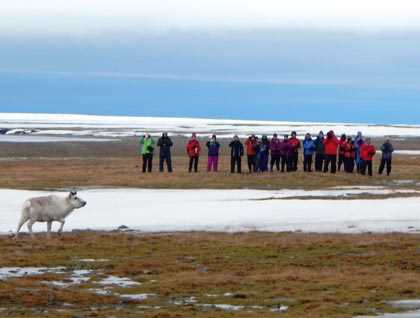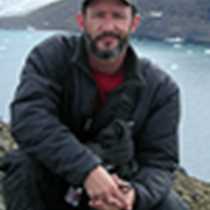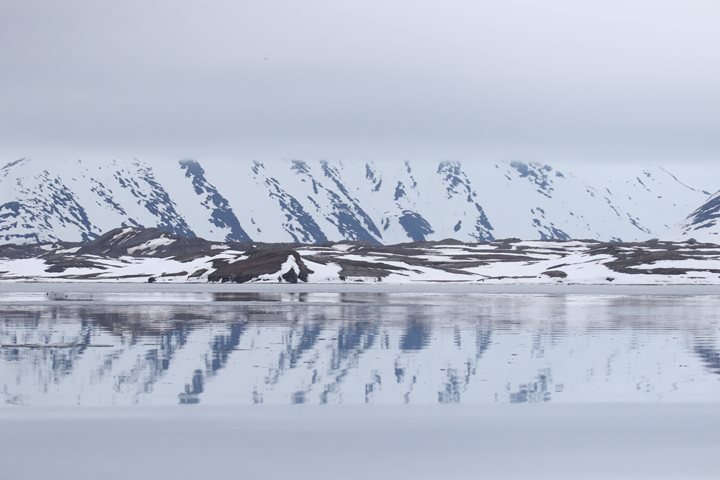The last day of our expedition along the coast of Norway and north to Svalbard took us to the largest island in the archipelago, Spitsbergen. There are several large fjords or glacially-carved bays that indent the west coast of Spitsbergen. The ship was anchored in one of these fjords, Bellsund, where the bay splits into smaller fjords. Even from the ship we could tell that the hillsides were alive with seabird life.
Once on shore we could see the clouds of small birds that make the scree slopes their home in the summer time. These dovekies or little auks are the smallest seabirds found here in this part of the arctic. They are so small that nesting on the sheer cliffs is not an option as they would be crowded out by larger guillemots and kittiwakes. These birds escape the arctic fox by nesting in the rocks of the slopes, being small enough to wriggle into the voids between the rocks.
As we made our way up the beach to the moss-covered tundra, several reindeer were seen foraging on the slopes. Most of the reindeer were young ones and may have never seen humans before. A couple of them ran towards the groups to get a closer look; once satisfied that we were of no possible harm or no interest they moved on and continued feeding.
There were two well-maintained cabins for visitors, photographers and scientists from Longyearbyen to use, the town being in the next fjord to the north. Closer inspection showed the nice wooden seats and other amenities around the cabins.
The afternoon was spent on the ship heading out to the west of Spitsbergen to search for marine mammals. A friendly fin whale was spotted who gave us a few close passes before venturing off to the open sea. We then spent time packing away our belongings and memories from these past two weeks.







